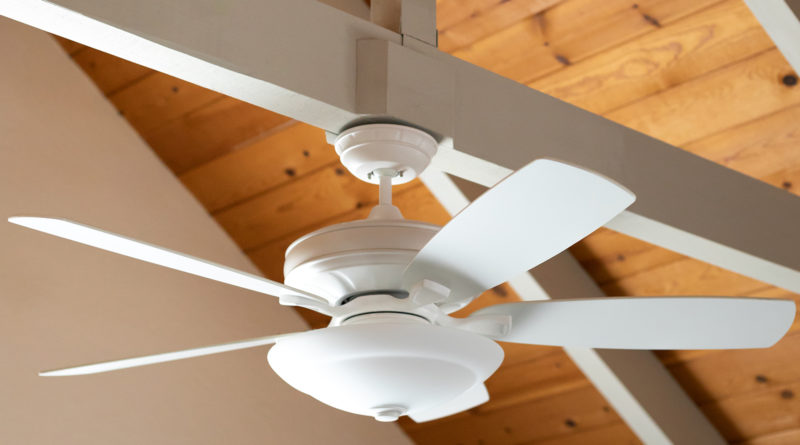Some (Don’t) Like it Hot
How our ancestors survived the Texas heat and how you can keep cool too
By JANNA ZEPP
Summer is nearly over, but it is still unbearably hot. This year will go on record as one of the hottest, rivaling the summers of 2011, 1998 and 1980 for misery. History shows that high summer temperatures have always been common, so how did our ancestors survive?

More than a century ago, Texans had nothing like modern air conditioning to cool their homes. They found ways to make things tolerable, but by and large, they sweated out summer temperatures even indoors. Of course, 120 years ago, the climate was different. The planet was coming out of what historians call a “mini-Ice Age” that ran from about the 1200s until about the 1850s. Temperatures rarely went higher than 95 degrees. Still, the heat was, at least to them, miserable.
Our Southern forebears tried to make their homes as breezy as possible to beat the heat. The list of things that follow are what they did:
- Homeowners kept all the windows and doors in the house open to keep the air moving.
- Carpets were pulled up during the summer and put in storage.
- Thick screens were put on the windows to keep direct sunlight from shining into the house.
- Downstairs, ceilings were high to draw hot air upward and away from the lower parts of the rooms.
- Upstairs, the ceilings were lower than rooms on the ground floor and a home had twice as many windows to let the hot air escape.
- Families put slip covers on all the furniture to protect the fabric from fading in the heat.
- Kitchens typically were separate from the home, usually a structure in the backyard. It kept the heat of the stove away from the house and protected the home from catching on fire.
- In the bedroom, the mattresses would be changed. In the winter months they used feather mattresses, and in the summer, they would use corn husk or corn leaves.
- Dog trots, aka outdoor, open-air breezeways between rooms in a home helped facilitate air movement in the summer. An example of a home with a dog trot exists at the Daniel Village at the Mayborn Museum at Baylor University in Waco.
These tricks did not keep things cool as much as made the heat more tolerable. Today, we have more options, thankfully.
“There are many factors, most importantly of course to have an HVAC system and insulation,” says Megan Kiella, vice president of Kiella Homebuilders. “Insulation type and thickness play a role in the temperature of your home, insulated windows and window coverings (like blinds, curtains or shades), door weather stripping and thresholds, and then the elevation of the home in general. Having overhangs or porches in windowed areas help some with cooling.”

Dean Winkler of CRW Construction agrees and adds: “Protection from the sun on the east and west sides of the house by patio covers, window shades, landscaping (helps). Insulated windows can be very beneficial as well as window shades to block the sun’s rays or even solar screens. Extra insulation is always a big benefit, also. Upgrades in A/C equipment is expensive but also will help in the long run.”
If you are building a home, speak to your builder about what works best for efficient heating and cooling of your home. You also might include a feature from the last two or three centuries to help, such as high ceilings or add a dog trot between your main home and a guest room that has its own separate climate control. You might want to include a fireplace in a room with a high ceiling to cut your heating costs in winter, but again, your builder will help you best decide.
6 Ways to Keep Your House Cool
1. Repaint Sunny Rooms
If you have rooms that get a lot of direct sunlight, they can become extra warm in the summer if you have dark walls. Dark colors absorb light and heat in ways that lighter colors don’t. If your walls are painted white, the sunlight will reflect off them better and keep from heating up your room. While this might seem like a big job just to keep your house cool, if you’ve been considering repainting some of your rooms, this could be the motivation you need. Repainting your rooms a brighter color will also lower the need for lighting, which could help you to keep your rooms cooler in the evening.
2. Consider Drapes
While you might think that summer is when you want to take down your big thick drapes, think again. The sun coming through your windows can raise the temperature in your house several degrees. If you block it or absorb it closer to the window, the rest of your house will stay cool.
Thick drapes could keep the sun from overheating your home on those hottest days of the year. If you have drapes up during the winter, keep them up during the hottest days of the year. If you don’t have drapes yet, summertime could be the best time to get a great deal on them.
3. Keep Air Flowing with Fans
A fan is your best friend during the summer months. Some people travel everywhere with a little pocket fan when it gets warm out. A fan that catches a cool breeze can quickly cool down a house on a hot day.
Keep your windows open, when possible, with a fan either blowing the hot air out or the cool air in. If you have a clean, finished basement — which is rare down here — blow the cooler air from downstairs up into the main floor. If you’re going to be spending time on the upper floors of your home, blow the air upstairs from a lower floor.
If you notice you get more wind from the back of your home toward the front, use your fans to create a wind tunnel. As air picks up speed through your house, it will remain cooler.
4. Use Your Gardening Skills
You can use nature to help keep your house cool during the hotter months in Texas. While it might be difficult to plant lush green trees like you could in the northern states, bushes, trees, and other plants can help to block direct sunlight that heats up your home. There’s a delicate balance between what could look good and what could plunge you into shadows. Talk to a friend or colleague who knows landscaping to see what they think. If you have the wherewithal, perhaps you could plant a tree on your own.
5. Change Your Bulbs
Hot bulbs can heat up your home, even if you need them to light things up at night. Thankfully there are options to light your home with bulbs that create less heat. Fluorescent, LED, and lower wattage bulbs will use less power and still give you the light that you need. Changing your bulbs can make a big difference, not only in how warm it is, but how warm you feel. Being under bright lights when you’re already uncomfortably warm will give you the perception of being hotter than you are.
6. Keep Appliances Off
Keeping appliances off during the hottest weather is a must. However, there are still some things that need to be done around the house. Finding alternatives is your best bet for dealing with balancing domestic tasks and keeping your house cool. If you’re doing laundry, you should consider hanging your laundry up to dry during the day. This will keep your energy costs down and keep you from having to use your dryer and filling your house with unnecessary heat. If you must use your dryer, put it on right before bed so that the heat will be gone by the morning.
If you’re planning on make some pastries or baked goods, consider alternate desserts. There are plenty of no-bake cake recipes that can give you just as good of a dessert without having to heat your home in the summer.




